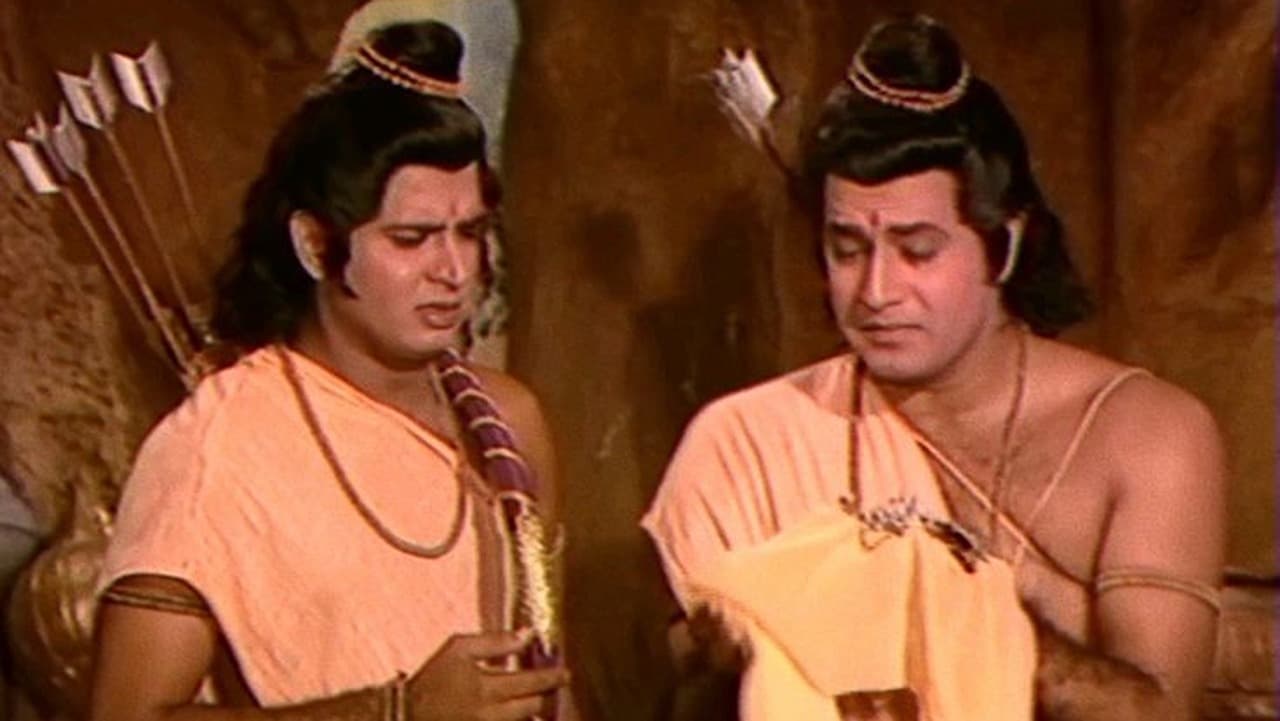DrEbert
When "Ramayan" aired, India (even then having a population over 900 million) came to a standstill. Buses stopped running, religious services (Hindu and non-Hindu) were rescheduled, and everyone stopped what they were doing for 30 minutes every Sunday morning to watch the ancient Indian epic brought to life on television. It's hard to believe that something like that is possible, but it really happened. Despite being dismissed by some as a cheap production with garish sets, cheesy special effects, and melodramatic dialogue, "Ramayan" was and continues to be a phenomenon.True, the production is quite obviously very low budget and it shows in the special effects and sets. (Tollywood director Bapu's "Seeta Kalyanam" a.k.a. "Seeta Swayamvar" shows a much better production, even though it, too, was low-budget.) Some of the same actors are used repeatedly for various minor roles and voices. At times, it does look like a high school production. But, what Ramanand Sagar (who, in my opinion, is otherwise a mediocre filmmaker) has done here is spectacular. Despite all of the above, "Ramayan" works incredibly well because one can sense that a great deal of devotion went into making it. This is a series that really has a heart and soul. Every time I watch "Ramayan," I have a religious experience.The dialogue might sound melodramatic to some (and sometimes it is), but the script is extremely faithful to the original texts that it is based off of. Sometimes, lines are directly quoted from Valmiki or Tulsidas and translated into Hindi. "Ramayan" takes very little dramatic license and so what is presented on screen is an accurate presentation of the source texts. This gives "Ramayan" value not only to devout Hindus but also to students of Hindu religion and Indian epic poetry, both of whom can watch the series and get a good understanding of the works of Valmiki, Tulsidas, and others. The feeling conveyed in the television series is the feeling conveyed from a recital of the epic itself.What also helps this series tremendously is the music by Ravindra Jain. Indian storytelling in general (both in film and in religious sermons) has a tradition of mixing dialogue with songs. Here, Ravindra Jain uses music to its fullest advantage. There are plenty of songs throughout the series, but they are placed in perfect situations. This is not the typical Bollywood style of breaking into song and dance at random and inappropriate places. Instead, rather than boring the audience with a long battle scene filled with cheap special effects, the battle is shown with a song describing the battle. Scenes of devotion naturally have devotional music with them. Transition scenes are accompanied by lines of Tulsidas. In fact, Jain sometimes cleverly and seamlessly merges his own lyrics with the poetry of Tulsidas, creating songs that are modern masterpieces of music.I'm generally satisfied with the casting choices. Arun Govil and Deepika do well as Rama and Sita. Dara Singh is not an incredibly talented actor (he is originally a wrestler), but it worked for me to have him as Hanuman. My three favorite performances, though, are Sunil Lahri as Lakshmana (he's got Lakshmana's angry look down perfectly), Vijay Arora as Indrajit (he's got the boisterous personality down), and veteran character actress Lalita Pawar as Manthara (a perfect choice, as Pawar made a career out of playing literally hundreds of Manthara-like characters). Arvind Trivedi is not bad as Ravana, but he does not have the physically dominating presence that Ravana would need to have. Ravana should be tall, dark, muscular, and handsome, and Trivedi is none of those things. Still, not a bad performance on his part. (As an aside, the single worst casting choice is the actor picked to play Parshurama in one episode early on in the series; they picked somebody less than 5 feet tall to play a domineering character and it completely doesn't work.)We tend to put all of that aside, though, because of just how well the story works for us. "Ramayan" made religion fashionable on Indian television. This is why some scholars list Ramanand Sagar (who, I reiterate, was an otherwise mediocre filmmaker) as one of 4 men (along with Valmiki, Tulsidas, and Kamban) who has shaped modern interpretations of the Ramayana story. That is quite an achievement, to be one of the four main forces that guide a tradition that dates back thousands of years, all on a budget (I'm told) of Rs. 100,000 per episode.Really, I've already said more than needs to be said. All that really needs to be said is that "Ramayan" brought India to a STANDSTILL!

